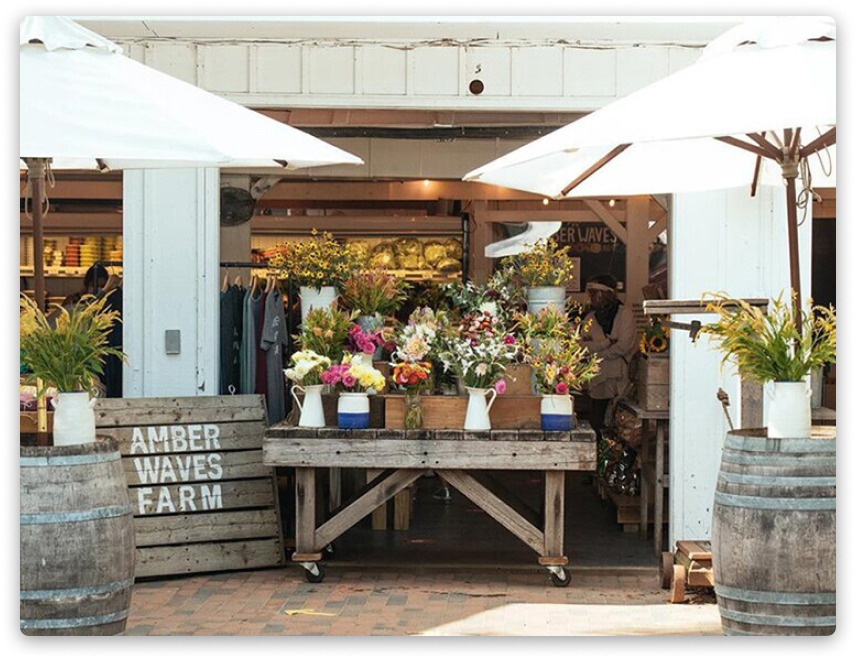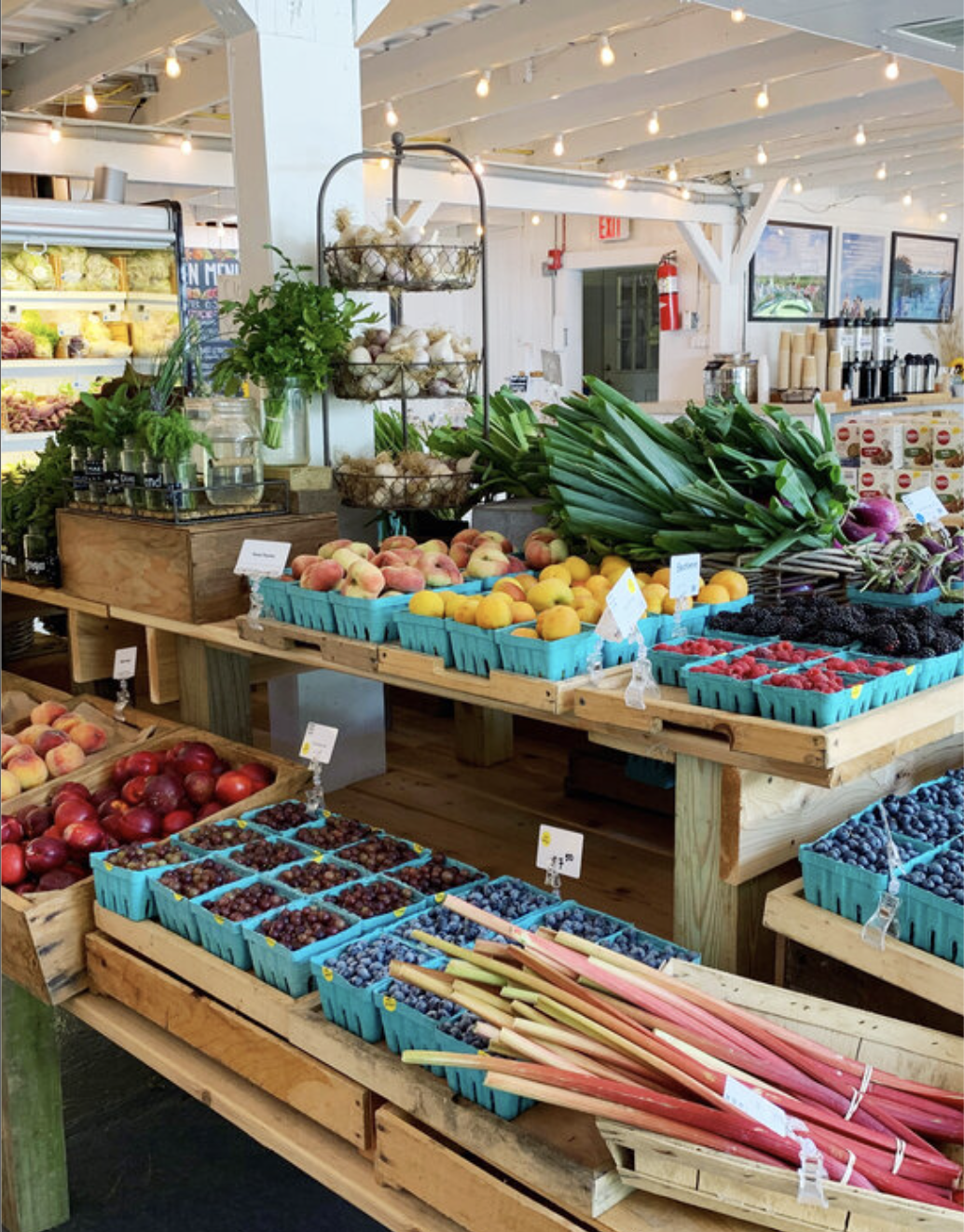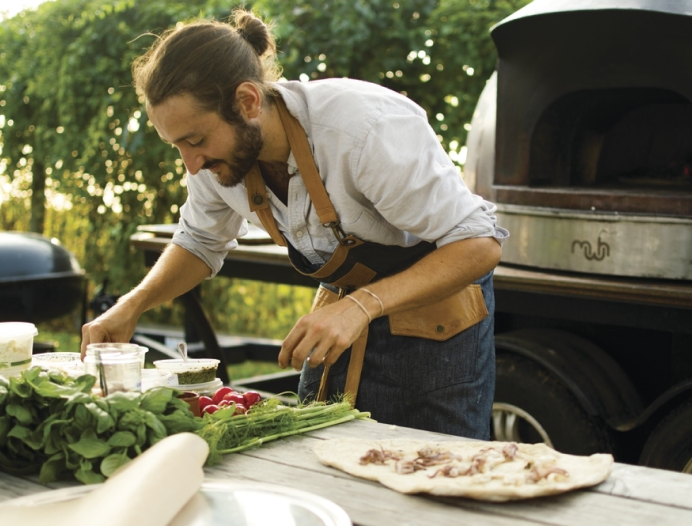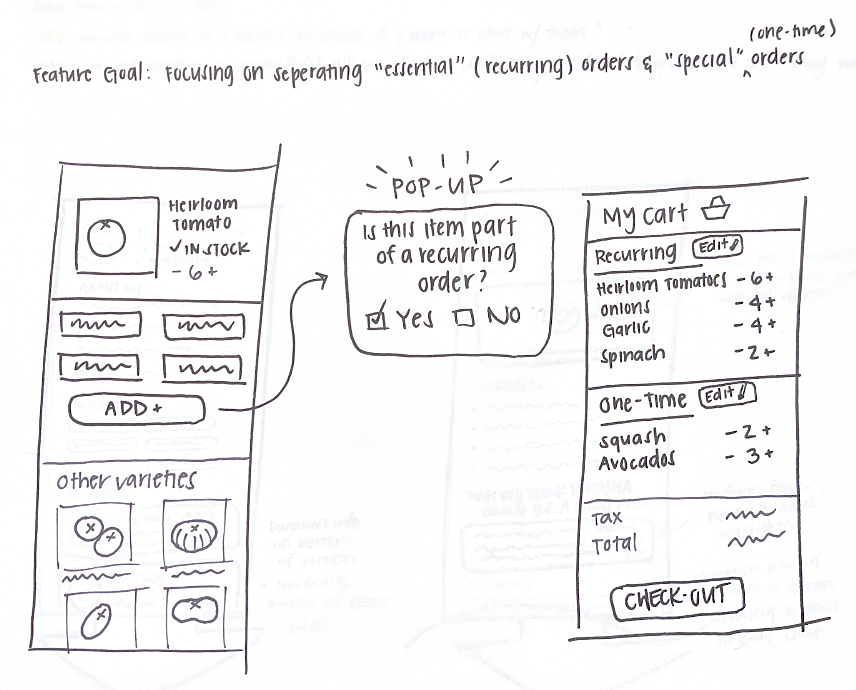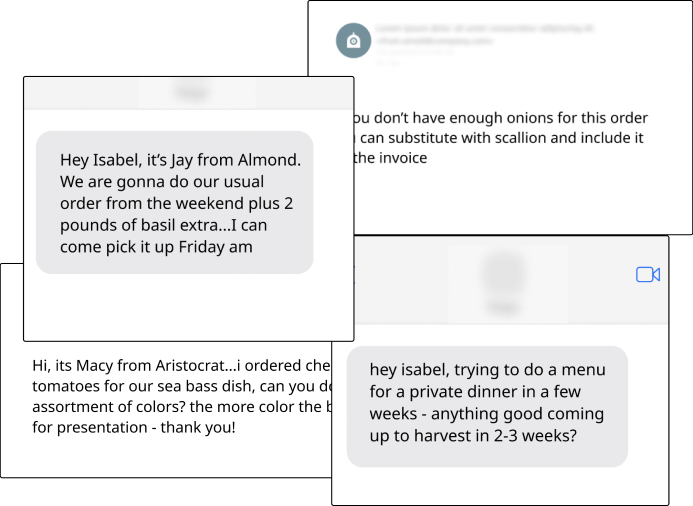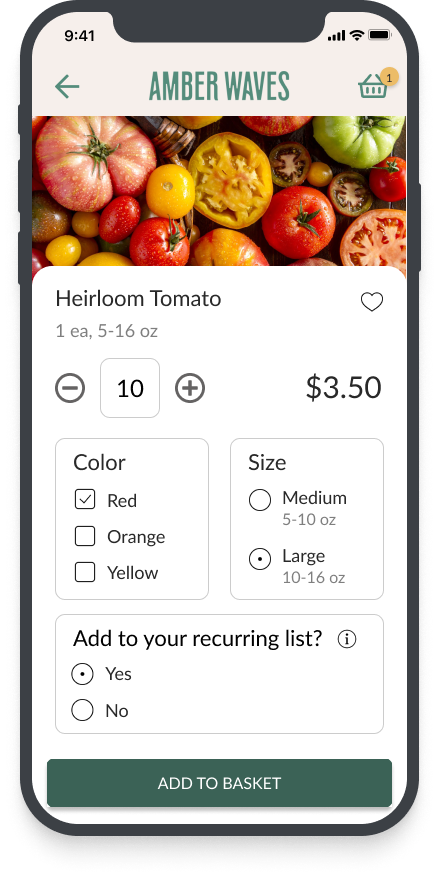Improving wholesale food ordering
Project Overview
Amber Waves Farm is a working farm, market, and restaurant in Amagansett, New York. They grow vegetables and sell them to local restaurants across the state.
Problem: In the past, ordering was done manually through emails, texts, etc. A wholesale website was built to relieve this but the email and text orders continue to keep coming in, restricting employee efficiency and customer satisfaction.
Solution: I created a streamlined way for customers to organize and customize their order requests on Amber Waves’ mobile platform so that Amber Waves employees can fulfill them with ease.
👩🏽💻
My Role
Research: user research analysis
Design: sketching, wireframing, high-fidelity mockups
🛠️
Tools
Figma
Timeline
~ 1 month
How will improving the wholesale ordering process contribute to business goals for Amber Waves?
Stakeholder interview with Isabel Milligan, farm & wholesale manager of Amber Waves
We wanted to learn more about Amber Waves’ current process, its challenges, and its desired business outcomes from current employees so we could better understand how to create an effective solution.
We chatted with Isabel to discuss her point-of-view on the constraints and challenges the farm has been facing recently.
Key Findings
Understanding user goals through insights from secondary research and user interviews
Next, we utilized secondary research and user interviews to further understand how customers place their orders and the goals they wish to accomplish when doing so.
Orders made by customers show very specific requests
One of the biggest challenges for Amber Waves is that customer orders and requests are sent through emails and texts. This makes processing orders for employees difficult and complicated.
We reviewed some of the text and email correspondence from AW to understand some of the specific requests being made by chefs and customers.
Key Insights
Next Steps
What does success look like?
Being able to get the day’s orders in a single place, with everything organized by the customer
Processing orders runs as smooth as possible
How will the outcome improve the business?
Efficiency: AW employees will save hours of “organizing” orders
Satisfaction: AW will give accurate orders to customers, increasing customer retention & loyalty
1) Texting AW employees like Isabel directly is common for efficiency.
Farms have order cutoff times but depending on their work hours, chefs like Jack don’t always make it. Placing an order can be time-consuming as well so it’s often done “on the go.”
⌛
Current solutions & challenges
Users are not always utilizing the website to place orders; they are texting, calling, and emailing with custom requests that tend to get messy
Constraints & requirements
Orders need to be placed through the site to create order summary
No major overhaul of the site
There is no payment on the site, just invoice
Interview with chef Jack Formica, frequent customer of Amber Waves
Additionally, we spoke to an Amber Waves customer to gain his perspective and dive deeper into some of the needs and preferences chefs have when placing an order.
We asked him about his typical process of ordering with AW and what he believes are the more important aspects of ordering efficiently and accurately.
2) Specific requests range by needs, be it sizing, color, freshness, etc.
Thus, knowing what might be new on the list is desired as making an order through the site might not be accurate.
How might we make placing a wholesale order more accurate & efficient for customers without sacrificing efficiency for Amber Waves?
Sketching solutions
Next, we sketched some potential features that might support both user and business goals.
Here, you’ll see some of the few concepts I began to flesh out:
Feature 1: categorical information for each product for the user to customize
Feature 2: ability to select if product is part of a recurring order
Feature 3: custom lists
Feature 4: favorite button to save for later
Feature #1
Customizing order requests by being able to select the color and size of an item as they are available
Future addition: notes section for customers to make comments on further specifics like freshness of product, etc.
Narrowing down my focus
I chose to prioritize a combination of feature 1: product customization and feature 2: organized lists based on timing needs as this gives customers the ability to quickly see and order the items they need and customize their orders without having to contact employees like Isabel.
Highlighting key features and bringing them to high-fidelity
After receiving feedback from my team mates, I made some edits to my sketches that improved overall navigation and visual hierarchy. I then created high-fidelity designs of these features to showcase the details of their functionality and how they might support business and user goals in the ordering process.
#1
Continue building out design flow from browsing the marketplace all the way to check out.
#4
Monitor usage metrics including customers’ engagement with mobile site and key features, and conversion rate of successfully ordering.
#2
Conduct usability tests with chef Jack and other customers to measure ease-of-use and task success.
#5
Build and test out potential future features like a “Coming Soon” section that highlights new produce currently getting ready to be harvested.
Feature #2
Organizing items as part of “Recurring” or “One-Time Purchase” lists before check out to differentiate between timing or event needs
Future addition: ability to add custom lists like “Catering Event” or “Dinner Party”
#3
Reiterate designs and continue rounds of testing based on customer feedback.


